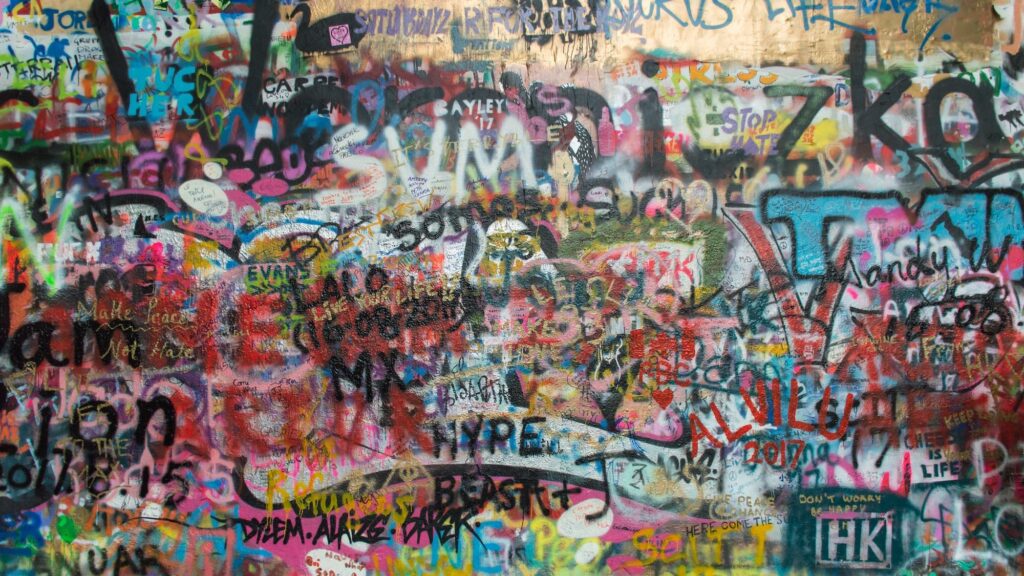Graffiti in Monaco: street art or vandalism?

In Monaco, as in France, tagging street furniture is forbidden. A form of street art, which is considered vandalism depending on where it is carried out, graffiti can also be seen in the Principality, although the authorities are effectively keeping it in check.
At the end of February, a post on the Facebook group “Aide et solidarité entre les résidents de Monaco” (Monaco residents mutual support) sounded the alarm. A tag had been painted on the Gabriel Arnoux staircase, near the Jardin Exotique. The user who wrote the post was surprised that the tag was still there “1 month after” it first appeared and asked the Société Monégasque d’Assainissement to remove it.

The SMA, equipped to deal with tags
Tags are prohibited in Monaco. To find out more about how they are removed, we contacted the Département de l’Équipement, de l’Environnement et de l’Urbanisme (DEEU – Department of Public Works, the Environment and Urban Development) The Facebook user was right: the SMA is responsible for cleaning up any tags or graffiti that might appear on the Principality’s walls.
“If the paint used is water-based, a high-pressure water hose will suffice. On smooth surfaces [street furniture, doors, electrical cabinets, etc.] SMA uses special anti-tag wipes. On rough or porous surfaces, the SMA uses a specific cleaning product that strips and removes the graffiti,” the Government told us.
The SMA is said to be currently testing “new products and mechanical techniques including sandblasting, airbrushing and lasers,” as they have noticed “the use of much more stubborn paints in recent times.”
Tags are rarely works of art, and on street furniture, the visual impression is that it is an act of vandalism.
Tags and graffiti can damage street furniture. The extent of the damage depends on the type of paint used and the surface, especially after cleaning products have been applied: “When it is irreparably damaged, the furniture must be replaced, which is an additional cost on top of that already incurred for cleaning or attempting to do so. Tags are rarely works of art, and on street furniture, the visual impression is that it is an act of vandalism,” adds the DEEU.
A free speech wall to prevent vandalism?
Our contact confirmed that “there are currently no walls set aside for tags” in Monaco. In Nice, a third free expression wall was created in 2022, allowing street artists to graffiti as much as they want and avoid up to two years in prison and a €30,000 fine, as provided for by a French anti-vandalism law.
A similar wall in the Principality in future would be “welcome” according to MrOneTeas in answer to our question. The Italian artist, a graffiti master whose reputation in the Principality is well established, sets a few boundaries however: “There are two worlds in graffiti: colour and vandalism. If you give someone permission to graffiti, you won’t be able to stop it spilling over.”
Few offences in the Principality
Free expression wall or not, people who illegally create tags/graffiti in Monaco are liable to fines, as stipulated in Art. 421-2° of the Penal Code: “Any person or persons writing or drawing signs or designs either on furniture or buildings belonging to the State or the Municipality, or on private buildings, will be punished by the fine stipulated in article 29, number 4 (€600 to €1,000).”
When contacted, the Police Department confirmed that it is “rarely faced with this type of anti-social behaviour.” “In fact, no citations or investigations have been carried out since 1 January 2022. Since then, however, the Police Department has been called upon five times on the subject, but no complaints have been filed.”
“The Police Department systematically takes photographs for archive purposes and contacts the Department of Urban Amenities or the owners of private property so that the documented damage can be cleaned up as soon as possible,” concluded the Monegasque authorities.
Did you know?
Graffiti is writing or a drawing generally carried out in an illicit manner in the public space (wall, monument, public transport, public toilets, etc.). It can be seen as a form of spontaneous expression, sometimes as an art form, and at the same time as defacement, which is considered illegal in most countries. A tag is a signature; it is either used to sign a graffiti or on its own. It tends to have a bad reputation compared to graffiti. Tags are the tagger’s calling card.









